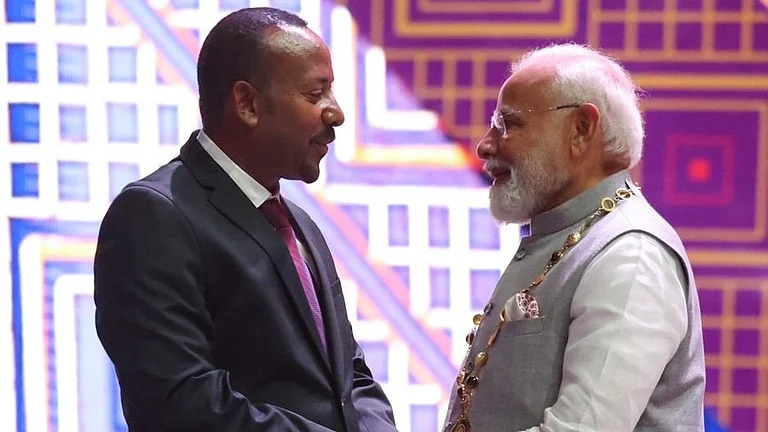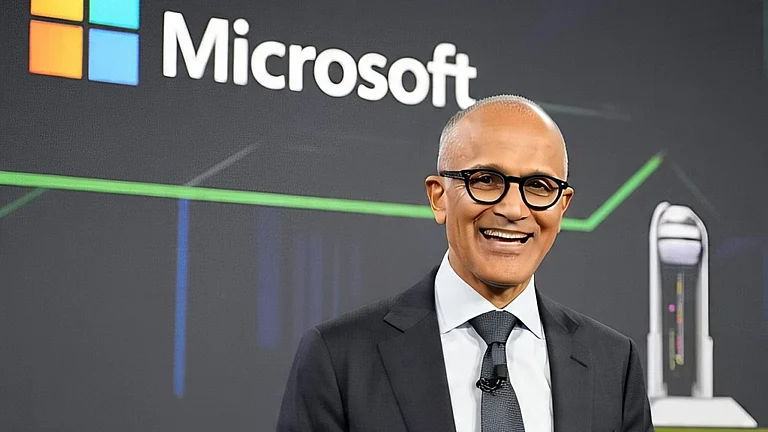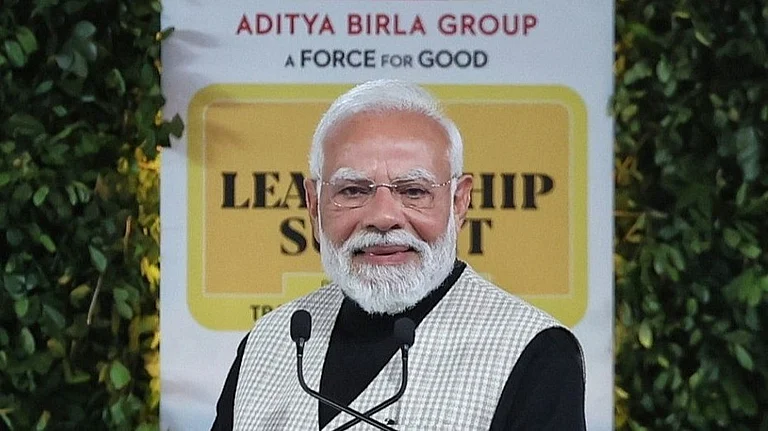Narendra Modi this year became only the second person in India’s history to secure the office of prime minister three times in a row. The only other person to have achieved this feat was Jawaharlal Nehru, India’s first prime minister, who served the office for 16 years and 286 days. As of writing, Modi has served the office for 10 years and five months and over this period he has become the fulcrum on which the fractious Indian polity balances itself.
The Modi years in many ways have been the culmination of India’s 1991 liberalisation project. India has opened up its economy allowing greater free trade, pursued a foreign policy that keeps its interests first, made great strides in space technology and digital infrastructure, and brought a record number of people within the ambit of formalised banking.
His government has overhauled the tax system, made labour policy more industry-friendly, focussed on manufacturing in India, attempted to revitalise agriculture and made government functioning significantly more efficient. While critics and members of the opposition have found fault with Modi’s economic policies, the Indian economy has seen stable growth at a moment of global economic upheaval. Joblessness, critics say, has been persistent, yet 415mn people have come out of poverty in the last decade-and-a-half. While household savings have been at an all-time low, more Indians now are able to afford premium products, international vacations and company stocks.
Despite all the criticism, Modi has become one of the most popular leaders in independent India’s history. “Between 2019 and 2024, Modi has evolved from a fiercely popular leader to cult status,” writes Swapan Dasgupta, a member of Bharatiya Janata Party’s (BJP) national executive in a piece on Firstpost. According to Dasgupta, Modi’s tough nationalist image is bolstered by his image as a pro-poor leader, one who has checked corruption and brought facilities such as cooking gas, electricity and toilets to the doorstep of the disadvantaged.
First Time for Everything
Modi is now 74 years old. He has been in politics for more than 40 years, been chief minister of Gujarat for 13 years and prime minister for 10. But not once in his career has he had to run a coalition. Political observers have often said that Modi likes to work alone.
A day before Modi took oath as prime minister, the first time in a coalition government (because the BJP fell 32 short of the majority mark), there was apprehension of political disruption in the air. But Modi sailed through with the help of his National Democratic Alliance (NDA) colleagues. He managed to convince both Nara Chandrababu Naidu and Nitish Kumar—two leaders who have often criticised him in the past—of his leadership without incident.
The Modi years are a culmination of the liberalisation project. India has allowed greater free trade, made strides in space tech and brought millions into formal banking
The everydayness with which he took up leadership of a coalition was surprising so far as it broke with tradition. Political parties are often seen hauling their leaders into resorts, cutting them off from the world, so that they don’t switch allegiance. Modi has had to do none of those things.
And in the past five months, he has succeeded in maintaining consensus with his coalition colleagues. Nilanjan Mukhopadhyay, journalist and author of the biography Narendra Modi: The Man, The Times, says, “Towards the end of the last parliamentary session, there were a few issues on which Modi took coalition partners’ views into account. They scrapped the lateral entry process and the Waqf bill got pushed to a joint parliamentary committee.”
Coalition Dharma
While this is Modi’s first time running a political coalition, he has been part of the broad coalition of the Sangh Parivar, comprising 40–50 organisations from diverse sectors of society and politics, for decades.
Mukhopadhyay says, “Modi had the advantage of an emphatic victory in 2014 and 2019 which forced the Rashtriya Swayamsevak Sangh [RSS] to allow him to become the single-most important figure in the entire edifice. The moment he does not have a majority, he has had to struggle,” referring to comments by some RSS leaders which seemed to be critical of the prime minister.
But Modi has handled the apparent frictions well. While several comments by RSS leaders seemed critical of him, Modi has managed to reach out and affect a truce.
Through the 1990s, India saw significant political instability because of coalition dependencies. Governments would form one day and fall the next.The problems continued into the United Progressive Alliance era , with changing allegiances, parties walking into government and then walking out. What Modi seems to be changing at this moment is the manner in which coalition governments are typically run. That is what makes him a changemaker in 2024.












